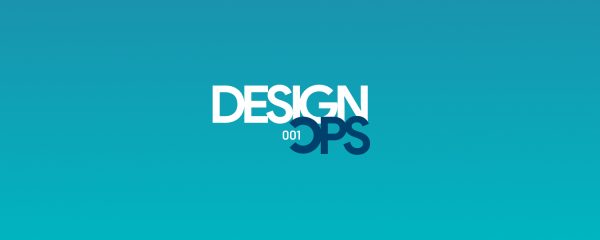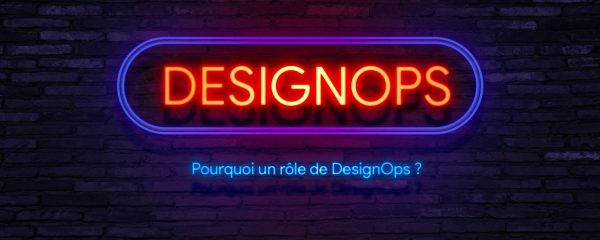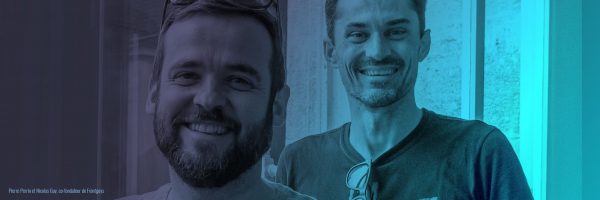


Designers, créez une relation de confiance avec vos collègues

[DesignOps] Pourquoi un rôle de DesignOps ?

Lancement d’un projet de recherche sur L’état du DesignOps en France

Design + Méthode Opérationnelle = DesignOps


Each time we talk, I realize how obvious it was that Patrizia should be the one to open our Masterclasses.
Her career path is not just a succession of experiences. It is one of audacious choices, big changes, and risk-taking that brings that little extra to the careers of the great leaders of contemporary design. It’s a journey of a DesignOps Leader.

Patrizia also has an original voice and perspective on the evolution of design and its organization. To help you discover her journey, her vision and what she will share with us during her Masterclass.
I have a non-linear background. I am an extremely curious person that loves experimenting and trying out new things.
So, after a degree in linguistics and a professional training in web and technologies, I moved into the digital space. In January 2000 I started my career as Usability consultant in Milano (Italy). My role was to help schools to go digital. It was probably one go the first digital transformations’ initiatives before the term was even invented!
I decided I needed to upgrade my skills
I then focused on digital inclusion and accessibility. Until 2008 I was very active both at European and Italian level and authored the very first book on web accessibility in Italian.
In 2009 I decided I needed to upgrade my skills and thanks to a scholarship from LSE (London School of Economics). I moved to London to focus on data protection and data quality. In the 4 years in academia I have learnt a lot, including my need to be under pressure and to have a more tangible and immediate impact on society and people.
From 2014 I have started setting up research practices and teams, and this is the time I realised how important it is to design processes, workflows, engagement models, to empower everyone to work efficiently and produce great results. At Wipro Digital, where I lead a global distributed UXR practice, I realised how much I enjoyed designing processes and designing my teams’ ways of working. I could feel I was having a direct and immediate impact, I could run experiments, I could change people’s life/work relationship, I could influence the work.
And I just felt that was something I enjoyed immensely!
In 2018 I joined Intuit in London to set up the new research practice. I remember looking at how teams were working and mapping how design and research were being conducted. I did an analysis with some ideas to improve the research and design processes and I presented it to my manager.
a new journey begun
At the end of the presentation he told me he was looking for a DesignOps manager to support him into his new global role.I had no clue what DesignOps was, until he smiled and just told me that the report and recommendation I was presenting were DesignOps.
So, after years I had a label and a clear definition for what I was doing, and a new journey begun!
I transitioned from research into DesignOps, as a good analytical mindset and the ability to apply systems thinking are critical to design processes and drive change. My transition was driven by my desire to have tangible impact on my teams and my organisation. Once I transitioned from an IC (Individual contributor) to a leadership role, the priorities were not to master the craft, but to empower the team and give them the guidance, the clarity, the head space, and the ability to focus, prioritise, and deliver.
I was seeing how many junior researchers were informally asked to do extra work by very senior people, adding more work to their planned tasks and causing long hours and burn out. I needed to design processes that could empower the team to push back, to have a clear overview of the priorities and timelines, and to feel in control.
And I was finding this so rewarding!
My role became to facilitate cross-functional processes, prioritise work, negotiate deadlines, design tools’ ecosystems that enabled everyone to do great work, seamlessly, and with confidence.
And I was finding this so rewarding!
I was able to have a direct and immediate impact on my team, and I could measure the impact! I was measuring impact by looking at the reduced churn, increased productivity, increased predictability, increased ability to deliver against the roadmap, and happier teams. And then the business was happier too, because by restructuring the tools and processes and by applying an economy of scale, there were tangible benefits on spending too.
So, I have found this to be something I wanted to explore and grow and to experiment more, because the impact and the opportunities in the DesignOps world are still in the making!
Designops is a transformational discipline that delivers tangible benefits at all organisational levels.
I have set up 4 DesignOps practices and like in every experiment and iterations, there are learnings. I will be sharing the learnings and the key steps to set up a successful DesignOps practice.
I will share the process, the frameworks, and the aspects to be mindful of, because DesignOps, as a systemic discipline, has some complexity that may be invisible or easily overlooked.
Design operations is a strategic discipline
For instance, the biggest misunderstanding when people talks about DesignOps is that operations are a task.
Design operations are not tasks, Design operations is a strategic discipline that will allow organisations to deliver on their product and service vision by operationalising that vision. Designops supports the design vision and strategy through operational excellence.
Without a DesignOps roadmap and clear vision, there are no tasks, because what makes DesignOps unique, is the ability to think holistically and strategically to connect vision with execution.
I will share how to develop that ability to think holistically and translate your organisation’s vision and strategy into an operational roadmap with quantifiable metrics.
Thank you so much Patrizia!
Enhance the efficiency and independence of your design team! The key? Our DesignOps training. Find out how, here!





